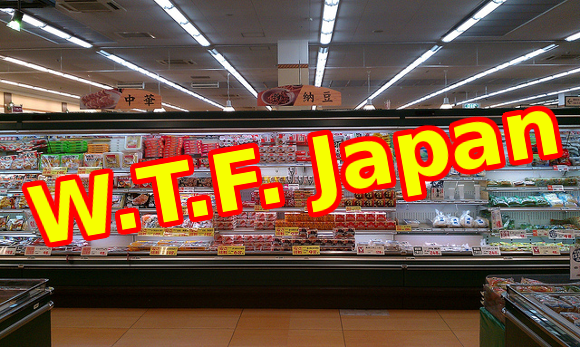
The most plentiful item at a Japanese grocery store: insanity.
Whenever I leave Japan and come back, one thing always manages to surprise me: supermarkets. It’s not so much the layout or the items for sale, but just some of the things we take for granted in grocery stores outside Japan that are completely different here – things you never realized existed until they were gone.
That’s why today we’re counting down the top 5 crazy things about Japanese supermarkets. These are the things that turn what you thought would be an average grocery store visit into jaw-dropping experience.
So let’s get to it! Starting off with…
Honorable Mention: Food, especially produce, is expensive!
See that picture of apples? That’s not 198 yen (US$1.90) for a pack of three or four… that’s 198 yen for one apple.
And hey, that’s not even including tax, which brings it up to 214 yen ($2.06). I don’t know how much apples are in the rest of the world, but in the U.S. (or at least New England) I’m used to prices like this:
▼ Ah yes, much better. At this price, depending on size, you could buy somewhere around 10 to 50 apples for the same price as one in Japan.
Washington Red Delicious Apples are back for a great price! They're just .39¢ a pound now at FoodMaxx! pic.twitter.com/ZRC9JxvK8B
— FoodMaxx (@FoodMaxx) November 4, 2015
In Japan, fruits are considered more of a dessert/luxury than a snack or part of a meal like in the U.S., so most Japanese people don’t really care that they’re expensive. But if you’re like me and you’re used to chomping down on an apple a day, then be prepared to change your habits or spend most of your income on fruit.
The reason this is only an honorable mention is because pretty much everything is more expensive in Japan, and produce is just another part of that rising tide. There is one silver lining though: the fruit tastes really good. But keep in mind that you will pay for that extra deliciousness.
▼ Pears are just as guilty of being “high price fruit” as apples.
▼ And if you’re a fan of grapes, well, I have some bad news….
▼ Bananas are basically the cheapest fruit in Japan. I cried sucrose tears of joy
when I realized that price was for a whole bag and not just one banana.
#5. Late-night discounts
If the last item on the list got you depressed, fear not! There is a way around the high prices of Japanese food: late-night discounts.
Each store does it differently, but typically Japanese grocery stores will start putting discount labels like the one above on produce, meat, and other items a few hours before the store closes. Pineapple may not be too tempting at 322 yen ($3.11), but at half that price it’ll probably find its way into your basket.
Before I came to Japan, I’d never seen discount stickers like this before. Even stores that did have a “discount shelf” were usually busted canned goods or expired cat food, and there was never much at all. But in Japan, the discount stickers are everywhere, and the discounted items are usually just as good as the normally priced ones… so long as you’re planning on eating them pretty soon.
▼ When there’s a half price sticker on some delicious slabs of beef,
it suddenly becomes steak night.
#4. The cashier rattling off the price of everything in your basket
Again, I’m not sure what the typical customer/cashier relationship is like in other countries, but in the U.S. it’s pretty friendly. You ask each other how you’re doing, you lie and say you’re doing fine, the cashier lies about liking your shirt/purse/purchases, and everyone leaves with a smile on their face after having enjoyed a satisfying, if brief, lie-filled friendship.
But not in Japan.
In Japan, the second the cashier starts scanning your groceries it’s off to the number-rattling races. The price of every single item gets called out loud and clear as it’s scanned, acting like a numerical brick wall between you and the cashier ever having any sort of conversation.
For those who have never experienced it, watch this video below. It’s taken from the Japanese national cashier competition (because of course that’s a thing). Skip to 0:13 to see the number-shouting madness in action. It’s a little exaggerated here, but not by much, and what you see here is considered the “ideal.”
Also bear in mind that the usual number-shouting goes on for much longer, since most people buy more than five things. It’s a wonder the cashiers don’t collapse after counting a giant cart full of groceries. Although maybe that’s because in Japan it’s hard to buy a lot of things since…
#3. They use baskets as carts
In Japan there’s no massive metal grocery carts with wheels that squeak and get stuck. In fact, there aren’t any big shopping carts at all. Instead they just have what I like to call “pushable basket accessories.”
Instead of loading your groceries into the gray plastic cart you see in the picture above, you’re supposed to get a basket, place it into the cart, and then just use it to ferry the basket around. I remember the first time I saw that, it blew my mind, and it still kind of does. I don’t really understand why they couldn’t just make the plastic rim on the cart a little higher, negating the need for the basket entirely.
Maybe it’s because Japanese people go food shopping more often, meaning they buy less at a time? Or maybe it’s because big carts would get stuck in the narrower Japanese aisles? Or maybe… it’s because they like having the feeling of assembling Voltron every time they go to the grocery store
▼ I think I can see the appeal now.
@SaintRPh @MoonbatCatnip Voltron Assemble!!!!! pic.twitter.com/ih7QjYIKG6
— ¡El SooperMexican! ن c137 🦬 (@SooperMexican) July 5, 2013
#2. No price per weight
In the U.S. pretty much every item available on the shelf has two prices: the cost of the item itself, and the price per weight/volume.
▼ I don’t know what “dry soda ginger” is,
but it’s 12.5 cents per ounce!
In Japan you also get two prices: the cost of the item… and the cost of the item after tax. There’s not usually the price per weight/volume anywhere to be seen. This isn’t a huge deal, but as someone who wants to stretch every yen/penny as far as it can go without having to do too much math, it’s asking a lot of my feeble brain.
▼ Let’s buy some cheese! Oh look, this six piece set of cheese
is 198 yen for 108 grams. This will be easy to compare!
▼ Hmm, well these sets of four cheese are 118 yen, and on the back it says each
block is 15 grams, for a total of 60 grams, meaning it’s… wait… where was I?
▼ Uh, 9 slices of cheese at 13 grams each for a total of 188 yen means… uh…
eh, screw it I’ll just wait until they get a half-price sticker slapped on.
And the #1 craziest thing about Japanese supermarkets is…
.
.
.
.
.
.
.
.
.
.
1. The self-bagging stations
I’ll never forget the first time I went to a Japanese grocery store. I pushed my little cart-basket up to the register, the cashier read out the price of every super-expensive item as she scanned it and put it into another basket, I paid for it all, and then I reached for the bags that weren’t there.
I was at a loss. All I had was a new basket full of all the stuff I had just bought, no plastic or paper bags anywhere. I was flustered for a moment, wondering how I was going to carry everything home without stealing a basket, when the cashier awkwardly directed me to a series of tables past the registers: the self-bagging areas.
For those who have never experienced this, what you’re supposed to do is bring your basket of groceries over to a table like in the picture above, grab as many small plastic bags as you need, and then put those bags into bigger bags – either ones you brought yourself or purchased from the cashier. Plastic bags like you would normally get for free at the register in the U.S. cost around five yen each here.
▼ And if you bought something cold, like meat, there are ice boxes at the bagging
stations where you can fill a bag of ice to put in with your groceries for free.
Personally I’ve always found it strange that in Japan, the land of going all out for the customer, supermarkets don’t bag your groceries for you. Maybe they used to do it in the past but changed? Maybe it’s just more efficient to process more customers this way? I’m not sure, but having my own groceries bagged for me is a luxury I took for granted when I lived in the U.S. and it’s something I enjoy probably far too much whenever I go back.
So there you have it, the top five crazy thing about Japanese supermarkets. Have you ever had a shocking surprise at a Japanese grocery store? Let us know in the comments, and be sure tell us if your store has any good discounts because we love a good bargain.
Featured/top image: Flickr/Yuya Tamai (Edited by RocketNews24)
Insert images: ©RocketNews24
In the meantime, give me a follow on Twitter and let me know if there’s any topics you’d like to see covered on W.T.F. Japan. See you next week!

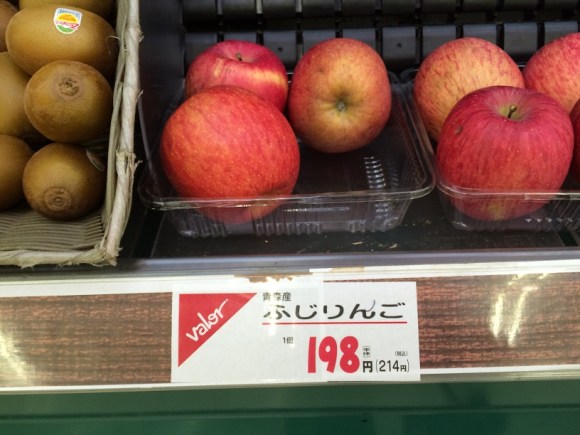
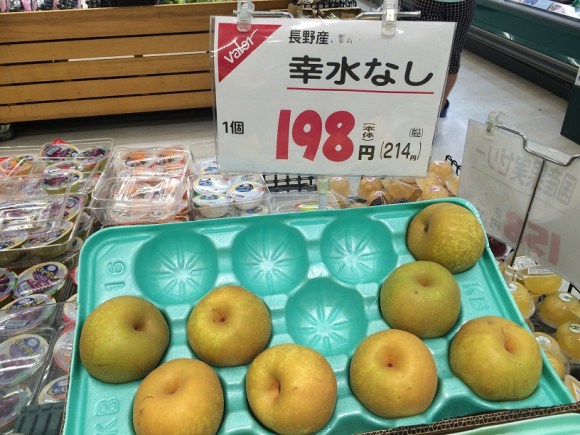
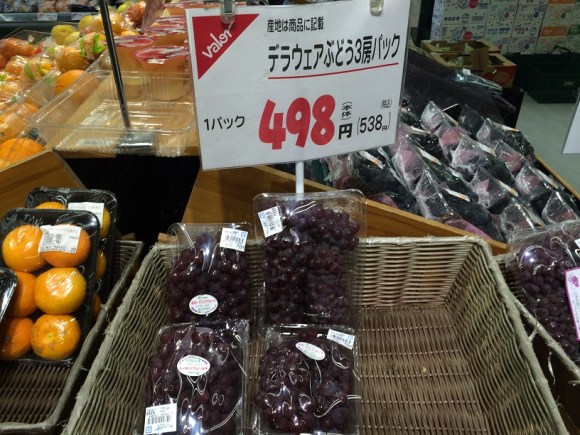
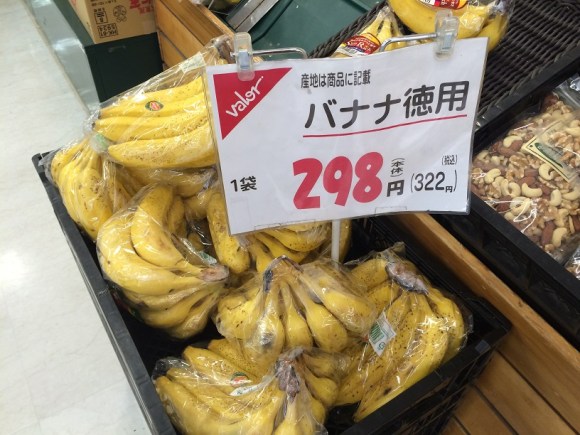
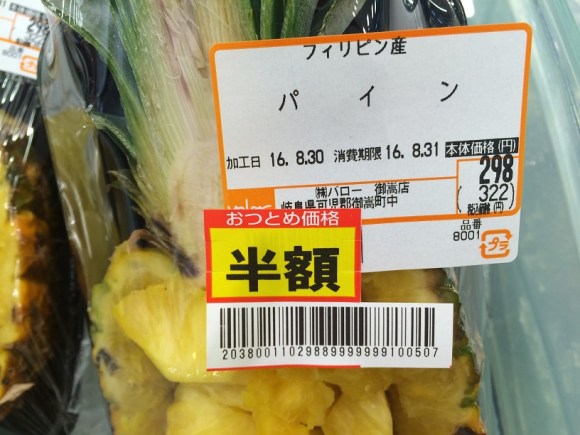
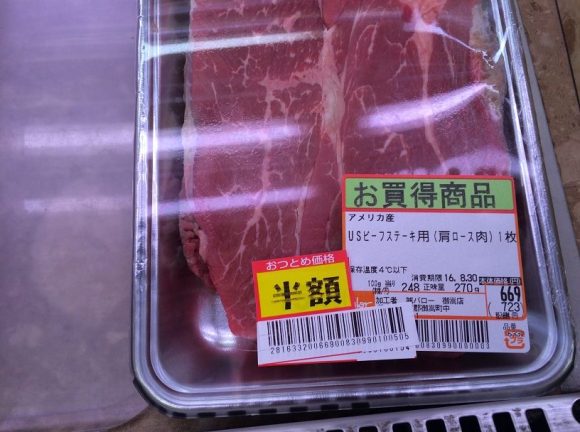
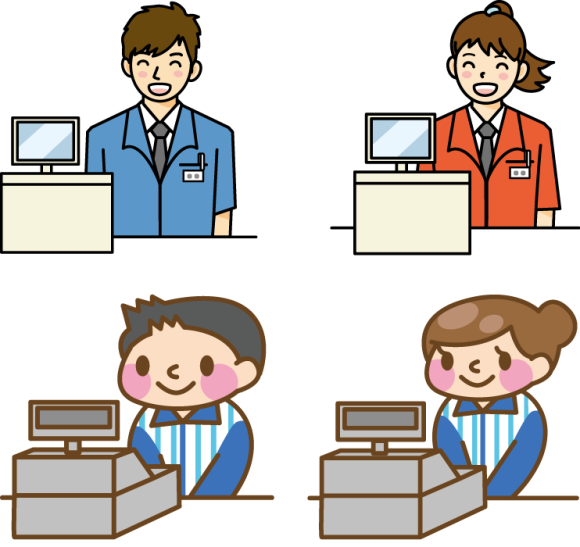
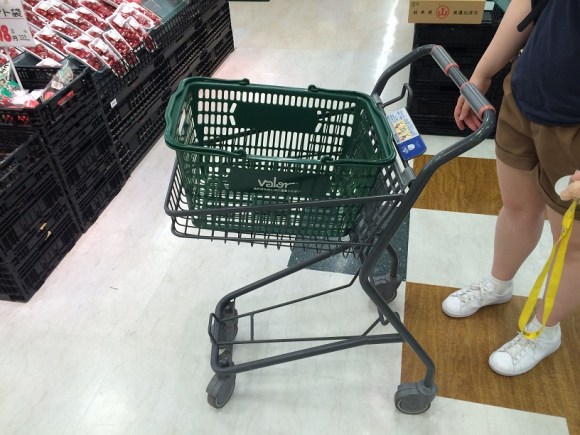

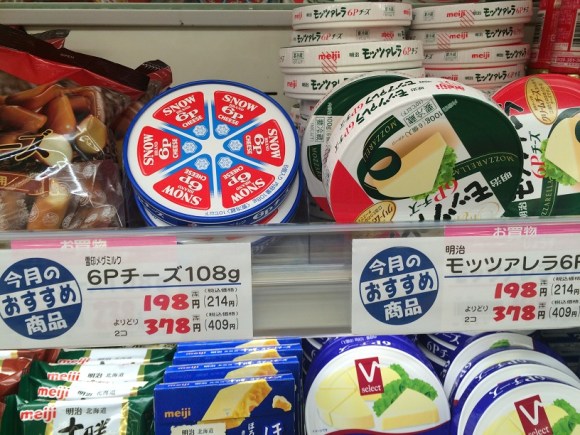
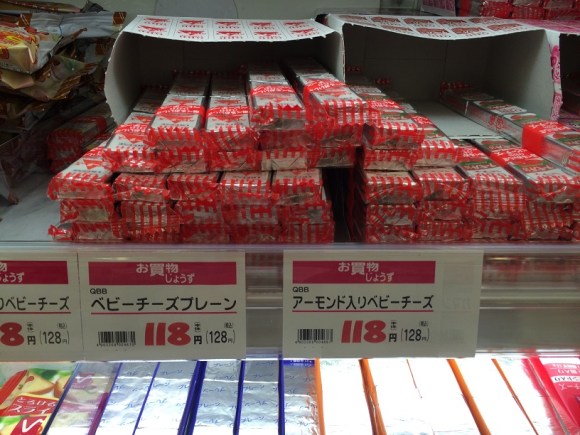
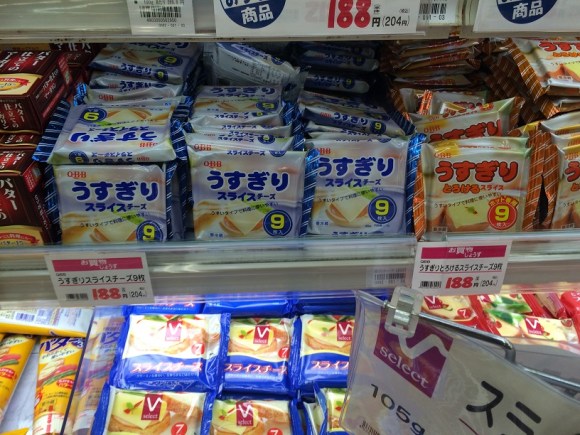
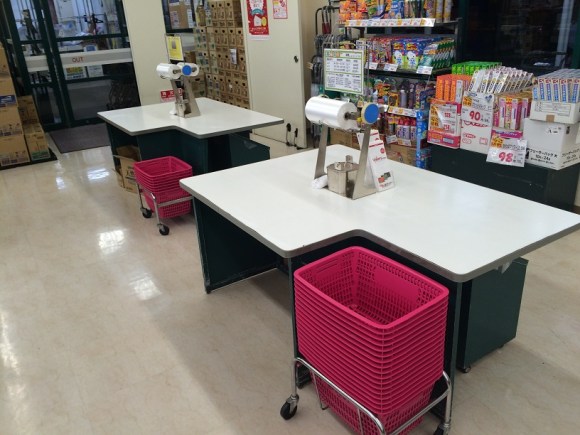
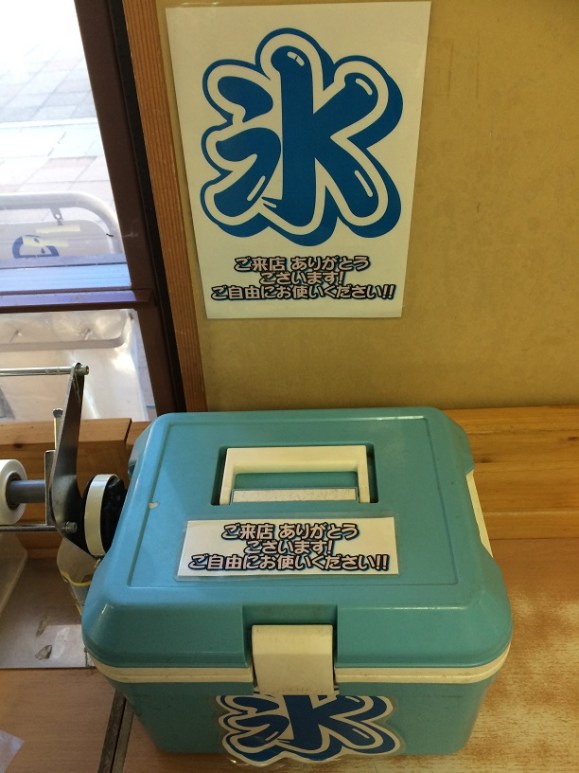
 Pretty or practical? Japanese supermarket sparks conversation about shelf stacking styles
Pretty or practical? Japanese supermarket sparks conversation about shelf stacking styles W.T.F. Japan: Top 5 offbeat Japanese animal cafes【Weird Top Five】
W.T.F. Japan: Top 5 offbeat Japanese animal cafes【Weird Top Five】 W.T.F. Japan: Top 5 most difficult kanji ever【Weird Top Five】
W.T.F. Japan: Top 5 most difficult kanji ever【Weird Top Five】 Japanese convenience store or Japanese supermarket: Which one is cheaper?
Japanese convenience store or Japanese supermarket: Which one is cheaper? Here’s why Japanese supermarkets play “cheap” background music all day, according to Twitter
Here’s why Japanese supermarkets play “cheap” background music all day, according to Twitter McDonald’s new Happy Meals offer up cute and practical Sanrio lifestyle goods
McDonald’s new Happy Meals offer up cute and practical Sanrio lifestyle goods More foreign tourists than ever before in history visited Japan last month
More foreign tourists than ever before in history visited Japan last month Starbucks reopens at Shibuya Scramble Crossing with new look and design concept
Starbucks reopens at Shibuya Scramble Crossing with new look and design concept All-you-can-drink Starbucks and amazing views part of Tokyo’s new 170 meter-high sky lounge
All-you-can-drink Starbucks and amazing views part of Tokyo’s new 170 meter-high sky lounge Is the new Shinkansen Train Desk ticket worth it?
Is the new Shinkansen Train Desk ticket worth it? The oldest tunnel in Japan is believed to be haunted, and strange things happen when we go there
The oldest tunnel in Japan is believed to be haunted, and strange things happen when we go there Arrest proves a common Japanese saying about apologies and police
Arrest proves a common Japanese saying about apologies and police Disney princesses get official manga makeovers for Manga Princess Cafe opening in Tokyo
Disney princesses get official manga makeovers for Manga Princess Cafe opening in Tokyo Japanese convenience store packs a whole bento into an onigiri rice ball
Japanese convenience store packs a whole bento into an onigiri rice ball Beautiful Sailor Moon manhole cover coasters being given out for free by Tokyo tourist center
Beautiful Sailor Moon manhole cover coasters being given out for free by Tokyo tourist center We try out “Chan Ramen”, an underground type of ramen popular in the ramen community
We try out “Chan Ramen”, an underground type of ramen popular in the ramen community Beautiful new Final Fantasy T-shirt collection on the way from Uniqlo【Photos】
Beautiful new Final Fantasy T-shirt collection on the way from Uniqlo【Photos】 Foreign English teachers in Japan pick their favorite Japanese-language phrases【Survey】
Foreign English teachers in Japan pick their favorite Japanese-language phrases【Survey】 There’s a park inside Japan where you can also see Japan inside the park
There’s a park inside Japan where you can also see Japan inside the park Studio Ghibli releases Kiki’s Delivery Service chocolate cake pouches in Japan
Studio Ghibli releases Kiki’s Delivery Service chocolate cake pouches in Japan Japan’s bone-breaking and record-breaking roller coaster is permanently shutting down
Japan’s bone-breaking and record-breaking roller coaster is permanently shutting down New definition of “Japanese whiskey” goes into effect to prevent fakes from fooling overseas buyers
New definition of “Japanese whiskey” goes into effect to prevent fakes from fooling overseas buyers Foreign passenger shoves conductor on one of the last full runs for Japan’s Thunderbird train
Foreign passenger shoves conductor on one of the last full runs for Japan’s Thunderbird train Our Japanese reporter visits Costco in the U.S., finds super American and very Japanese things
Our Japanese reporter visits Costco in the U.S., finds super American and very Japanese things Kyoto bans tourists from geisha alleys in Gion, with fines for those who don’t follow rules
Kyoto bans tourists from geisha alleys in Gion, with fines for those who don’t follow rules Studio Ghibli unveils Mother’s Day gift set that captures the love in My Neighbour Totoro
Studio Ghibli unveils Mother’s Day gift set that captures the love in My Neighbour Totoro Domino’s Japan now sells…pizza ears?
Domino’s Japan now sells…pizza ears? New Japanese KitKat flavour stars Sanrio characters, including Hello Kitty
New Japanese KitKat flavour stars Sanrio characters, including Hello Kitty Sales of Japan’s most convenient train ticket/shopping payment cards suspended indefinitely
Sales of Japan’s most convenient train ticket/shopping payment cards suspended indefinitely Sold-out Studio Ghibli desktop humidifiers are back so Totoro can help you through the dry season
Sold-out Studio Ghibli desktop humidifiers are back so Totoro can help you through the dry season Japanese government to make first change to romanization spelling rules since the 1950s
Japanese government to make first change to romanization spelling rules since the 1950s Ghibli founders Toshio Suzuki and Hayao Miyazaki contribute to Japanese whisky Totoro label design
Ghibli founders Toshio Suzuki and Hayao Miyazaki contribute to Japanese whisky Totoro label design Doraemon found buried at sea as scene from 1993 anime becomes real life【Photos】
Doraemon found buried at sea as scene from 1993 anime becomes real life【Photos】 Tokyo’s most famous Starbucks is closed
Tokyo’s most famous Starbucks is closed One Piece characters’ nationalities revealed, but fans have mixed opinions
One Piece characters’ nationalities revealed, but fans have mixed opinions We asked a Uniqlo employee what four things we should buy and their suggestions didn’t disappoint
We asked a Uniqlo employee what four things we should buy and their suggestions didn’t disappoint Princesses, fruits, and blacksmiths: Study reveals the 30 most unusual family names in Japan
Princesses, fruits, and blacksmiths: Study reveals the 30 most unusual family names in Japan Studio Ghibli’s new desktop Howl’s Moving Castle will take your stationery on an adventure
Studio Ghibli’s new desktop Howl’s Moving Castle will take your stationery on an adventure Next time you go sightseeing, use a tote bag instead of a cross-body bag, says Japanese traveler
Next time you go sightseeing, use a tote bag instead of a cross-body bag, says Japanese traveler Japanese supermarket sushi becomes even more awesome with cool new packaging innovation
Japanese supermarket sushi becomes even more awesome with cool new packaging innovation How much money do you need to live in your own apartment in Japan?【Survey】
How much money do you need to live in your own apartment in Japan?【Survey】 Two incredibly important phrases to remember when shopping in Japan
Two incredibly important phrases to remember when shopping in Japan How to use Japan’s new self-checkout supermarket carts
How to use Japan’s new self-checkout supermarket carts Nine tales of stunningly crazy customer complaints in from the Japanese service industry
Nine tales of stunningly crazy customer complaints in from the Japanese service industry Costco Japan’s bulgogi bake is a melting pot of deliciousness
Costco Japan’s bulgogi bake is a melting pot of deliciousness Michelin-approved Japanese chef teaches us two gourmet-standard dishes using ice cream and toast
Michelin-approved Japanese chef teaches us two gourmet-standard dishes using ice cream and toast Japanese trains now even more convenient as new service lets you pick up groceries at station
Japanese trains now even more convenient as new service lets you pick up groceries at station Taste-testing Japan’s crazy-expensive 3,240-yen (US$29) persimmon
Taste-testing Japan’s crazy-expensive 3,240-yen (US$29) persimmon Ikea fukubukuro lucky bag gives us 10,000 yen worth of goods for 3,000 yen
Ikea fukubukuro lucky bag gives us 10,000 yen worth of goods for 3,000 yen Cheapo News: Tokyo Grocer selling “expired” items for pennies on the dollar
Cheapo News: Tokyo Grocer selling “expired” items for pennies on the dollar This super-rare Japanese banana has edible skin!【Taste test】
This super-rare Japanese banana has edible skin!【Taste test】 Potentially dirty and broken used Shinkansen food/beverage carts on sale in Japan for 100,000 yen
Potentially dirty and broken used Shinkansen food/beverage carts on sale in Japan for 100,000 yen
Leave a Reply